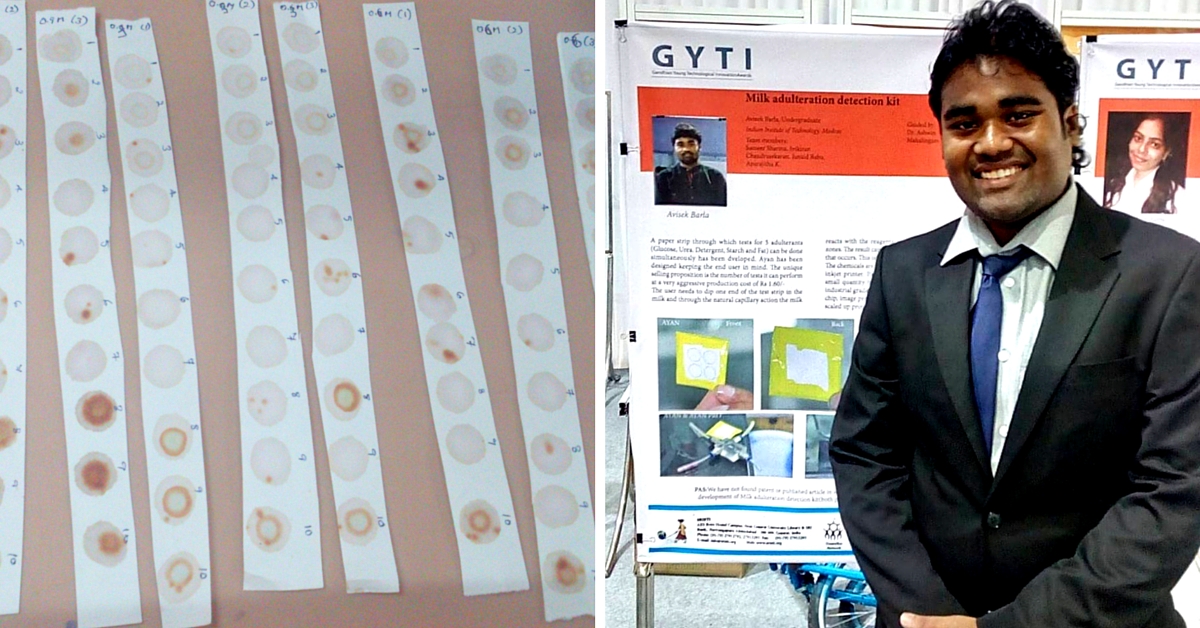
The fight against adulterated milk has just grown stronger. A 23-year-old from IIT-Madras has a simple yet novel innovation to detect milk adulteration with a strip of paper.
Avisek Barla, final year B-Tech student, won the Gandhian Young Technical Innovation (GYTI) Award this year for developing a strip of paper that reveals adulteration in a matter of seconds. Also, it’s cost effective, not just to use but also to manufacture.
The strip is divided into zones. “It can detect as many as four adulterants in a single test,” Avisek says to The New Indian Express, “ The FSSAI identifies about 33 adulterants in milk, and the device so far can detect the presence of glucose, urea, boric acid and detergent.”
The paper contains reagents spread across the length of the strip. These change colour when it comes in contact with adulterated milk, as the adulterants react with the reagents, much like a litmus test. To make these strips, Avisek used a normal inkjet printer to “print” the chemicals in small amounts on the paper.
The specialty of his innovation is that it’s simple and cost effective to produce.
Source: Facebook, GYTI Awards
Using paper as a medium and chemicals at small quantities also help to bring down the costs, according to Avisek.
Besides, the test with the detection equipment can only be done after purchasing the milk from the farmer. “On the other hand, the paper strip at a nominal cost will help a distributor test for adulterants before they buy milk from the farmer,” Avisek explains. “One only needs to put a drop of the milk sample on the paper to get the results. If the paper changes colour, it indicates adulterants. At this juncture, it is the distributor’s job to reject the sample at the source.”
Inspired to create something that a common man can use in his daily life, Avisek says that the main intention behind the invention is to stop adulteration at its source. Besides being used by distributors, the strip he calls a ‘polymer chip’ can also be used in households.
Now, Avisek is working with his team to develop ways to detect more adulterants. He is also working on a test that can determine the contents of milk, such as percentage of fat, protein and antibiotics. Meanwhile, they are in talks with companies to launch this detection strip into the market.
Also Read: Pathbreaking Technology to Detect Milk Adulteration in 45 Seconds and Less Than Re 1
Like this story? Or have something to share? Write to us: contact@thebetterindia.com, or connect with us on Facebook and Twitter (@thebetterindia).
If you found our stories insightful, informative, or even just enjoyable, we invite you to consider making a voluntary payment to support the work we do at The Better India. Your contribution helps us continue producing quality content that educates, inspires, and drives positive change.
Choose one of the payment options below for your contribution-
By paying for the stories you value, you directly contribute to sustaining our efforts focused on making a difference in the world. Together, let's ensure that impactful stories continue to be told and shared, enriching lives and communities alike.
Thank you for your support. Here are some frequently asked questions you might find helpful to know why you are contributing?

